Are you going to Argentina? Don't miss the must-see! Here is our complete guide to visit the Iguazú Falls!
♪ Chutes d’Iguazú are a natural site of 275 cascades located in the middle of the tropical forest, on the border between Argentina, Brazil and Paraguay.
Appeals Garganta del Diablo in Spanish and Garganta do Diabo in Portuguese – literally “The Gorge of the Devil” – the falls mark the end of the course of the Iguaçu River, a tributary to the paraná and are among the most impressive in the world: in all, the cascades spill up to 6 million litres of water per second, or 6,000 tons per second! The waters flow at 82 meters high at the highest level, which gives them all their majesty.
Would you like to visit the Iguazú Falls? Here is our complete mini-guide to see them both from Brazil and Argentina.
Visit the Iguazú Falls: History and Presentation
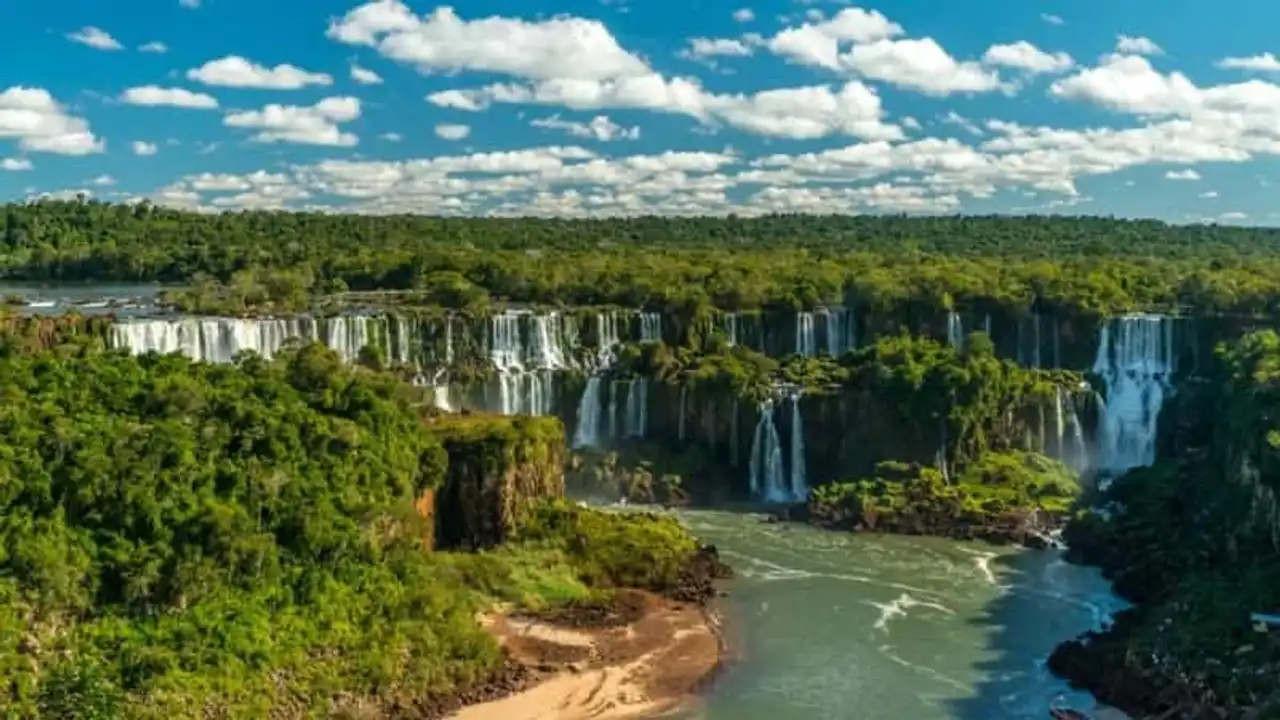
Photo credit: De Milonk / Shutterstock.com
The first European to learn about the cascades was a Spanish explorer named Álvar Núñez Cabeza from Vaca on 31 January 1542. He went on expedition to North America in 1527, where he visited the future states of Florida, Mississippi, Louisiana, Texas, Arkansas, Colorado, New Mexico, Arizona and California, and continued his way to the south to reach the colony of Asunción, a strategic high place of the time of which the Spanish could reach the Empire.
He was several times prisoner of the Indians, reduced to slavery, had to adapt to the way of life of the natives and their customs. It was after he gained the respect of the Indians that he was able to go back to Spain via the Mexico in 1536. It was during a second trip in 1541 that he discovered the existence of these falls, thanks to the help of local indigenous populations. The Spaniards appointed them Cataratas de l’Iguazú .
It was necessary to wait until the 18th century, when the Jesuits settled in the region to evangelize the Indians, so that the site, at the very difficult time of access, would not be rediscovered. Listed on the UNESCO World Heritage List in 1984, the Iguazú Falls later entered the Cenacle of the Seven Natural Wonders of the World. The Iguazú Falls are known from all over the world, and for cause: 80 meters tall, they take the form of an extended horse iron on a basaltic soil over 2,700 meters in length, and cause immense clutch as well as a smiling noise.
The rainforest that surrounds it houses more than 2,000 plant species as well as a very diverse fauna of tapirs, giant ants, screaming monkeys, ocelots, jaguars and Caymans. The park was built for visitors – in 2010, the site attracted more than 500,000 visitors from all over the world – with many trails and gateways. The Iguazú Falls range for 80 per cent of their surface in Argentine territory, and 20 per cent of their territory is on the Brazilian side.
What to see and do at the Iguazú Falls?
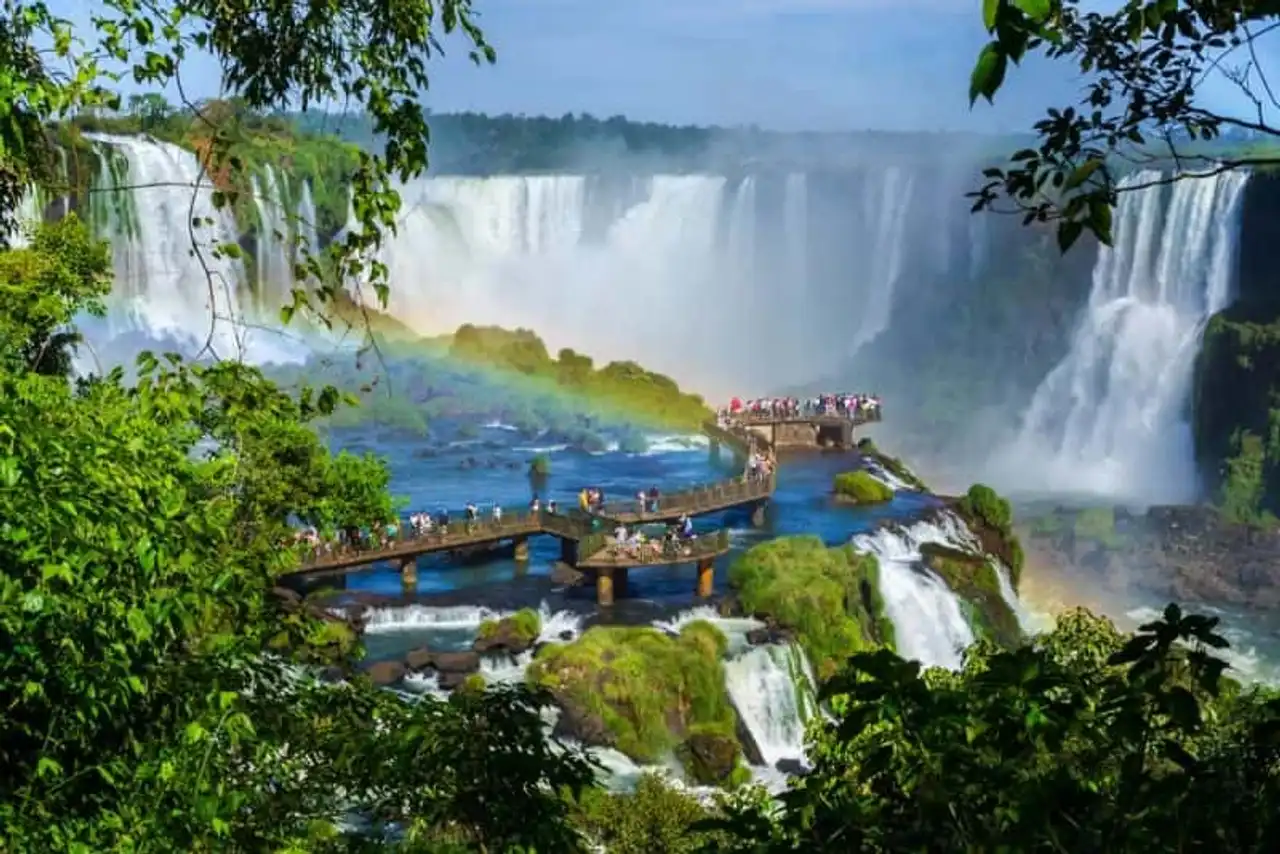
Photo credit: De R.M. Nunes / Shutterstock.com
So what to do and what to see when visiting the Iguazú Falls from Argentina or Brazil? So much to warn: the waterfall site is so vast that it is better to predict a whole day for the visit.
If you want to take full advantage of it, borrow a maximum of trails will allow you to have a multitude of unique views.
Visit the Iguazú Falls on the Brazilian side
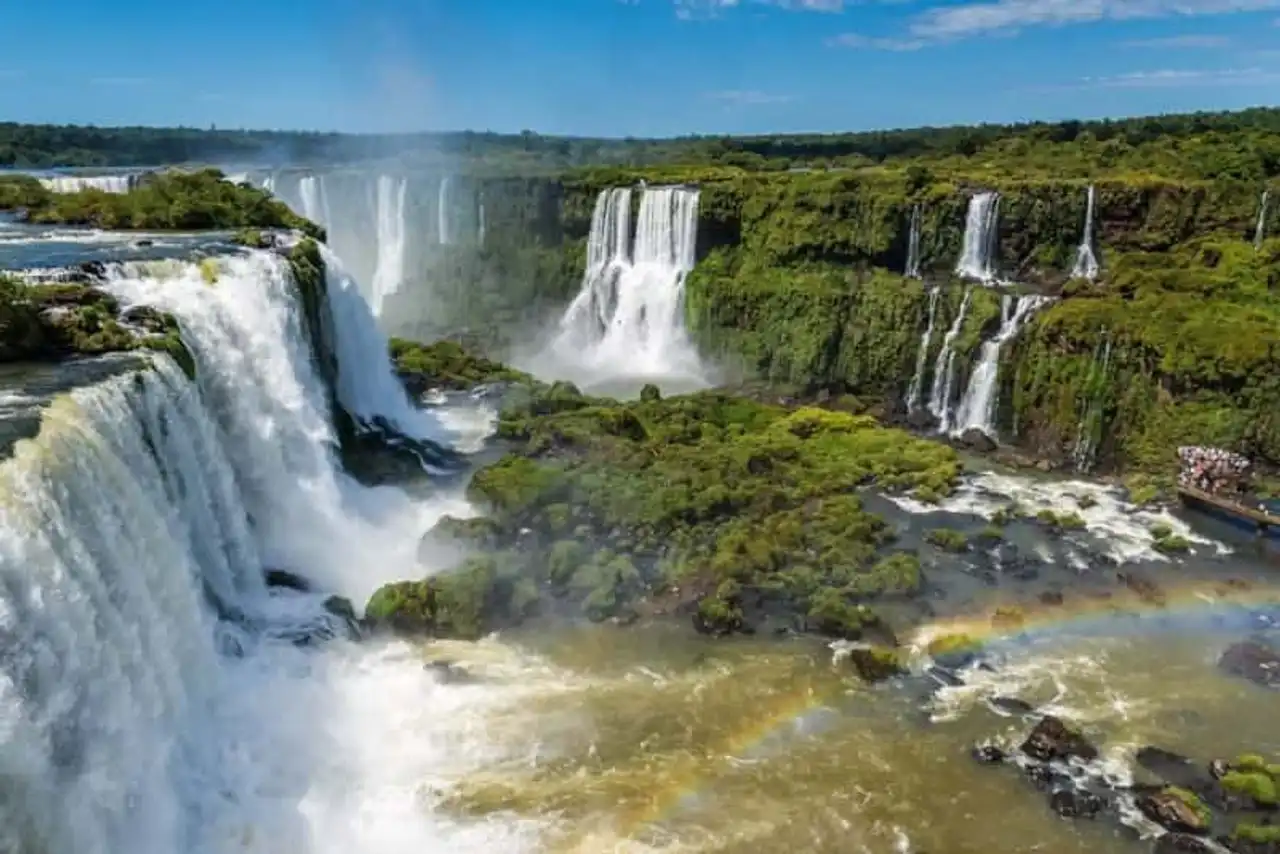
Photo credit: De K_Boonnitrod / Shutterstock.com
On the Brazilian side, the Parc National del’Iguaçu extends over 185,000 hectares, but it is winded by many paths in which the tourist buses go: it is not yet a paradise of nature. It encompasses falls and the surrounding tropical nature. Eleven kilometers after entering the national park, traveled by panoramic bus, you arrive on a 1.2-kilometre course, allowing you to get a set of views while approaching the Garganta do Diabo.
Contemplating the centre of the gorge offers the most impressive view, but this is where the most tourists come to photograph the site. It is also the point of view that wets the most! During the bus route, it is possible to stop for a canoe ride on the river. To see only the falls, you can go down to the stop Trihla das cataratas , to take a paved and tarmac road on a kilometre. Bus stops are as follows: Trilha do Poço Preto, Espaço Porto Canoas, Trilha das Cataratas, Macuco Safari, Administração PNI, Centro de Visitantes.
The fall on the Brazilian side offers a global view on the site. A panoramic elevator – if you no longer have calves... – located near the restaurant, offers a view of the Gorge of the Devil ( Garganta del Diablo) .
There is only one main Brazilian circuit, which lasts only one to two hours , but you can stay there for a whole day to enjoy the activities that the site allows (hiking, canoeing, swimming). It should be noted that it is also possible to overflight helicopter falls from the helipad located outside the park. By going to the Macuco Safari stop, it is possible to make a 4×4 safari on 9 kilometers in the tropical jungle and a rafting tour on 2 kilometers of rapids, leading to the foot of the cascades.
Finally, at the stop Trilha do Poço Preto , it is the walk that is in the spotlight: a 9-kilometre trail to hike, cycling in the jungle to Taquara Island.
Visit the Iguazú Falls on the Argentine side
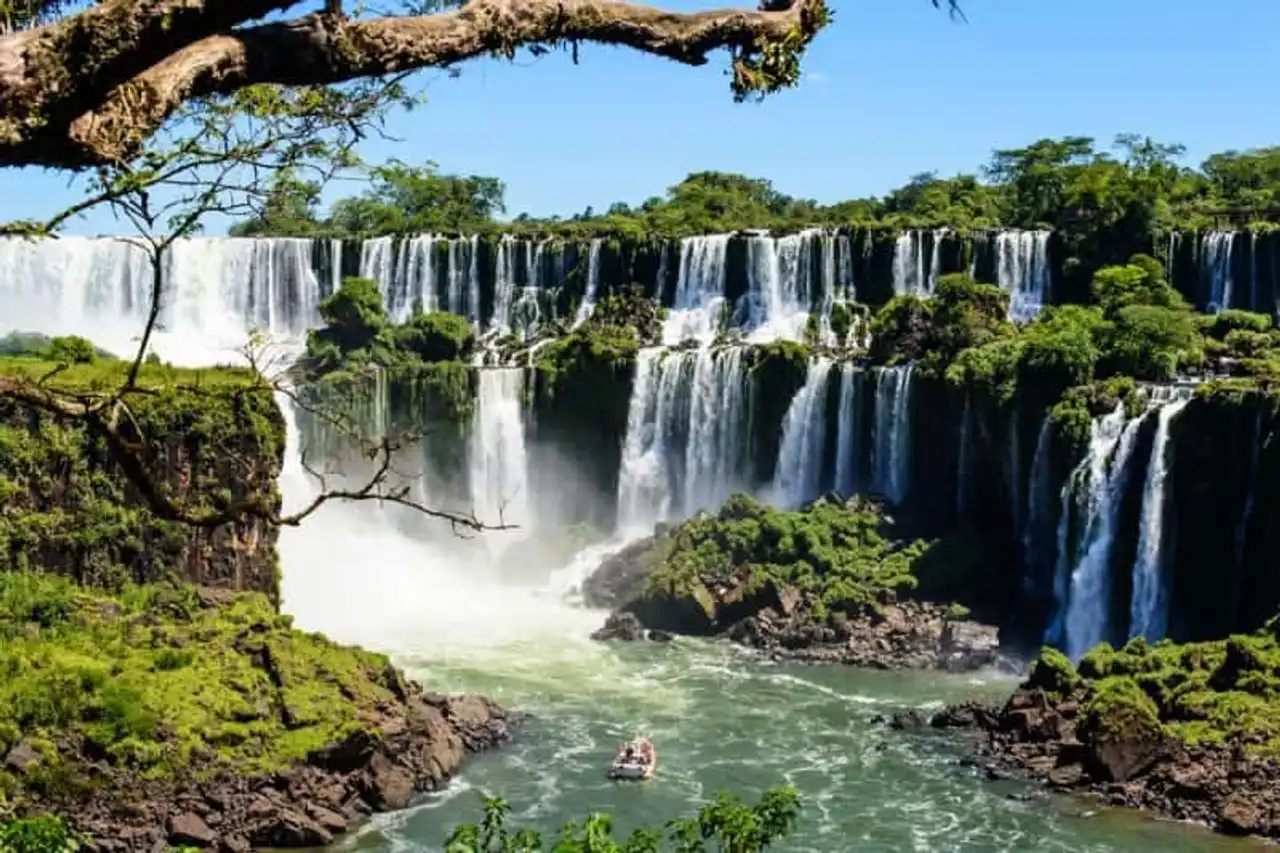
Photo credit: Det-anan / Shutterstock.com
Do not forget your passport to pass from one side to another. The Argentinian flank of the Iguazú Falls covers 80% of the total area of the site: it will take a good day to fully enjoy it. See you at Puerto de Iguazú by bus to the Brazilian-Argentina border.
On the Argentine side, the route is eminently larger than the Brazilian side: there is a variety of hiking trails offering all views from different angles on the waterfalls. A small train leads the frile of the walk towards Garganta del Diablo, the most impressive point of the site: anyone who goes there will certainly feel insignificant in front of the power of the waters, as to remind our smallness in front of nature.
The Argentinian side site allows you to enter the heart of the gorges thanks to wooden walkways, taking two main routes: a lower course – the longest, not to miss going under the waterfall Salto Bossetti – and a superior circuit, offering a diving view of the cascades. Finally, boats allow visitors to cross the river to go to San Martin Island.
How to go to the Iguazú Falls?
To visit the Iguazú Falls from Brazil, one can take the bus 120 from downtown Foz do Iguazú , to "Parque Nacional". From Argentina, we will take one remís (minibus) from the airport (for example) for the bus station.
The Rio Uruguay bus from the Puerto Iguazú city centre terminal, shuttles every 20 minutes. We can also go by taxi but it will be much more expensive. The journey lasts 30 minutes .
Note that a company bus “ Crucero del Norte “, in the direction of “Caratas Brasil”, allows to travel from Puerto d’Iguazú to Foz do Iguaçu and to the Brazilian falls.
Schedules and rates of the Iguazú Falls
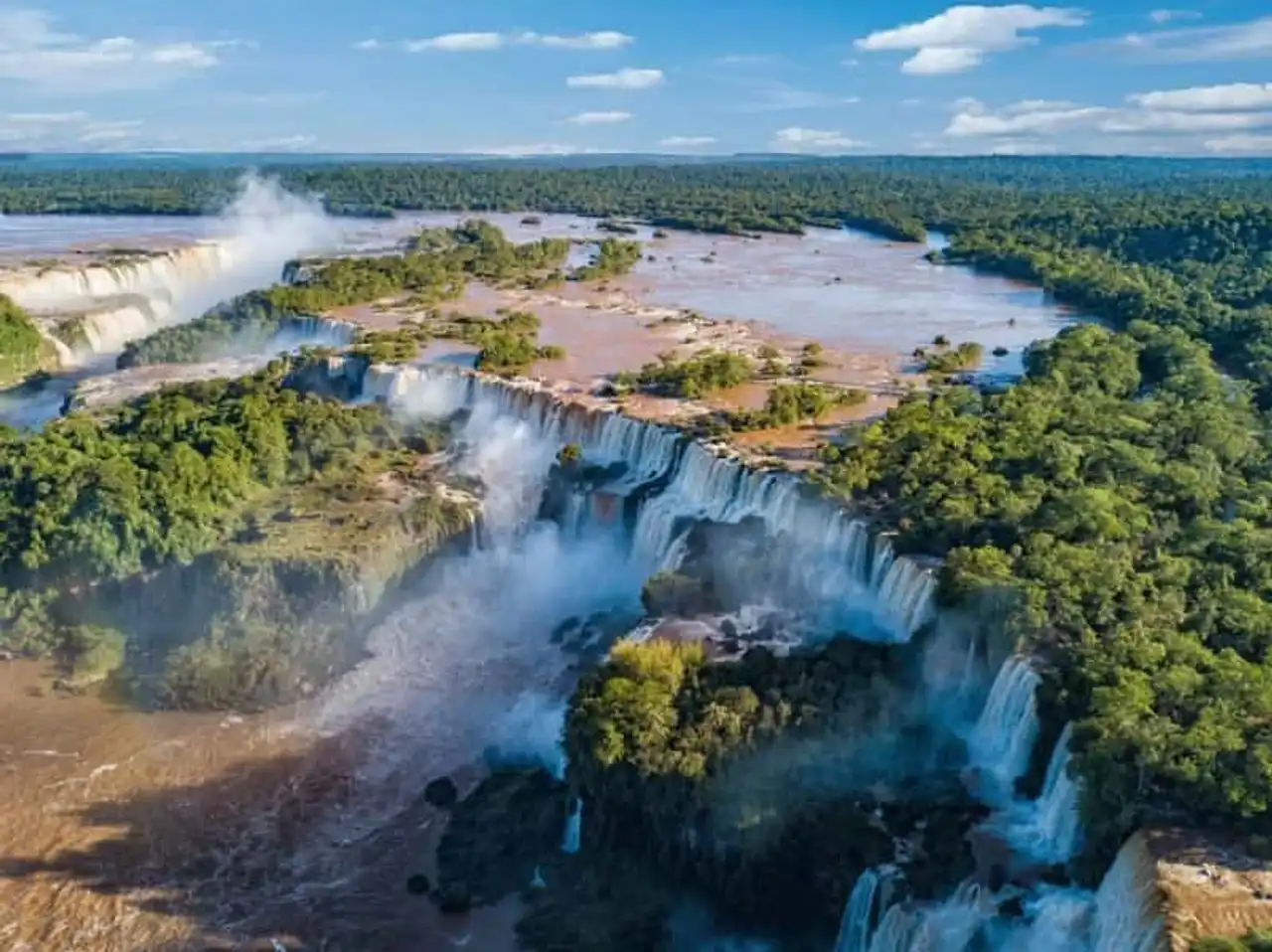
Photo credit: De Jan Schneckenhaus/ Shutterstock.com
HORARI
Argentinean falls are open to 8 a.m.- 6 p.m. : it is also recommended to visit them Morning , in order to have a wide amplitude throughout the day (and to avoid to the maximum the great affluence). On the Brazilian side, access to falls is made between 9 a.m. and 5 p.m. .
RATES
Access to the Iguazú National Park is done by a mini-bus for 120 ps (7€) the return trip. Entrance to the National Park costs 330 ps , either 19 € . But sometimes Argentina is experiencing episodes of galoping inflation, so prices can increase in just a few months.
A guided tour is also possible for 20 € , with hotel round-trip transfers to waterfalls.
Other rates:
- Helicopter visits: 200 € Surroundings
- Walking and boat tours: 25 €
BON A LEARN
- Planned two to three days on site (Argentina cascades 2 days and one day for Brazilian cascades)
- Beware of the inflation rate in Argentina, changing the exchange rate and prices sometimes significantly
- Take one repulsive anti-moustic
- Consider the season: after heavy rains, the waters are abundant and brown/red/orange/ocre colour and there is less water in dry season, whiteish colour
- Take what drinking and eating : on-site restoration is out of price!
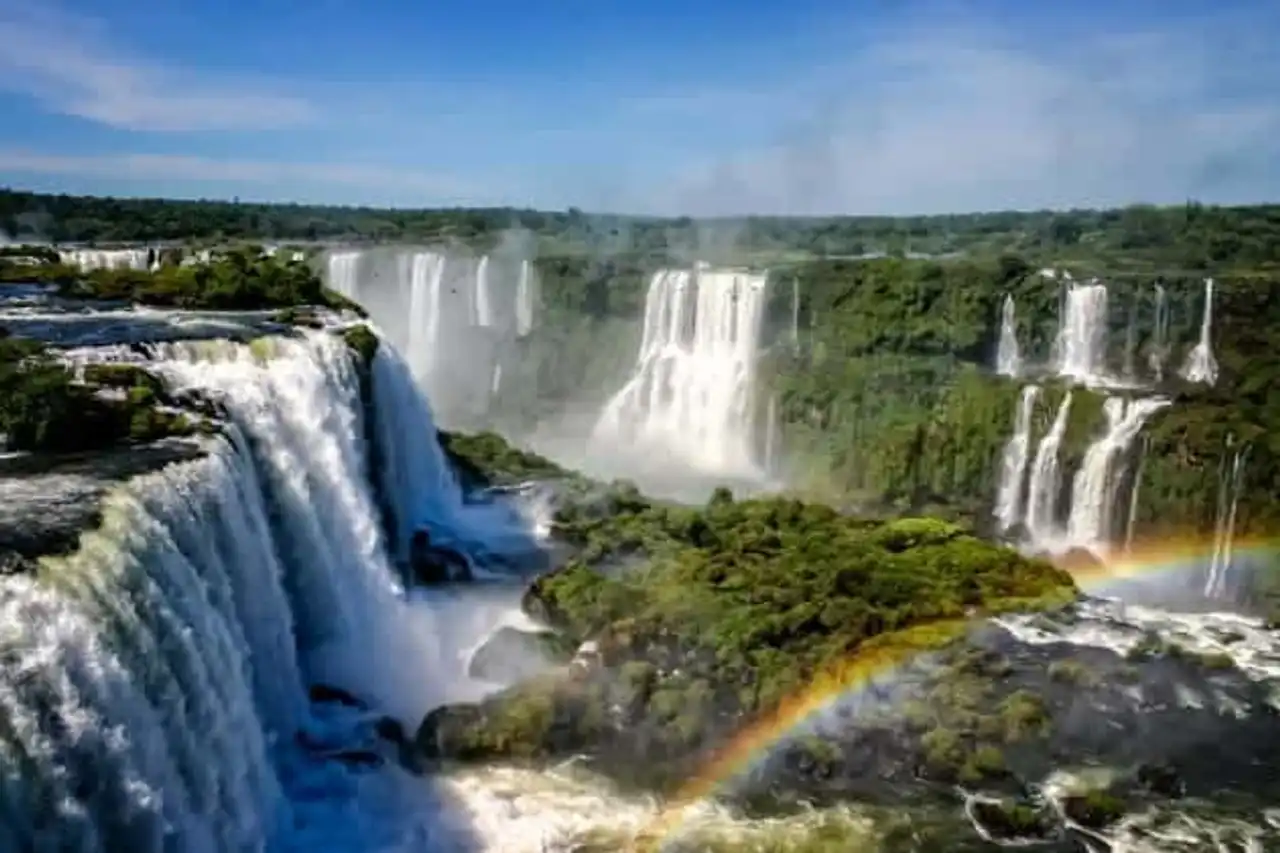




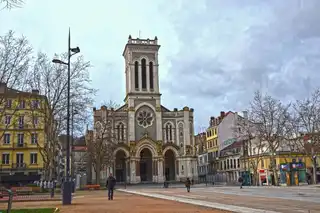
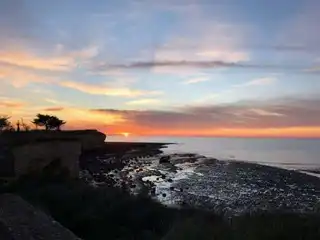
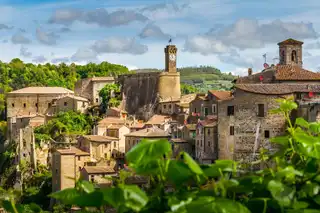
Loading comments ...